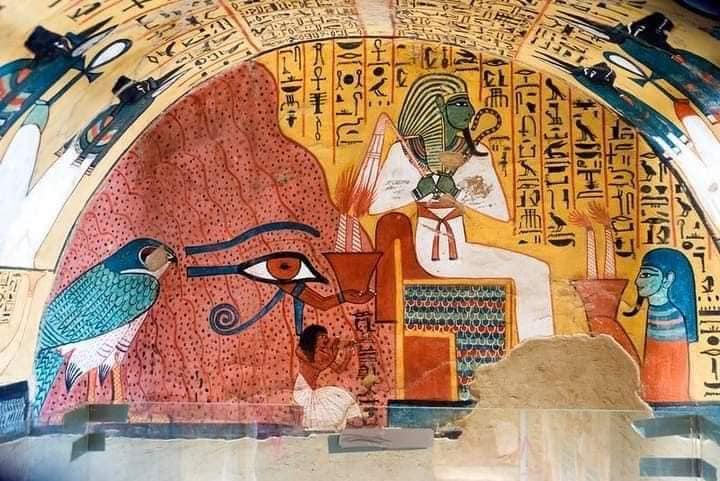Egyptian Queen Sat Amun
Daughter of King Amenhotep III and Queen Tiye
Akhenaten’s sister and Tutankhamun’s aunt
Set Amun is the eldest daughter of King Amenhotep III, and her mother is Queen Tiye and later married her father around the year 30 of his reign. The belief that Set Amun was the daughter of Amenhotep and Tiye came from the presence of objects in the tomb of Yuya and Tuya, Queen Tiye’s parents, especially the chair that bears her name with The title of the king’s daughter.
Her life and upbringing
The depiction of Queen Sat Amun can be traced very well, especially in the tomb of Yuya and Tuya, where three finely made chairs were discovered. These chairs were used before and were not specifically made for funerary furniture; they are of gradual size in largeness. It is assumed that they belong to Queen Sat Amun during her growth stages. They were placed in the tomb of her grandfather and grandmother in a tradition to place objects that have a distinct meaning in the deceased’s life, as depicted on the plate of her nursing mother, Nabat Ka Bani.
Almost nothing is known about her life beyond being the eldest daughter of a strong (and long-lived) queen, Queen Tiye. In the last decade of her father’s reign, she was promoted to the position of Great Royal Wife. Evidence of her marriage to her father consists of blue eyeliner engraved with the cartouches of Amenhotep III and Saat. Amun and alabaster bowl found at Amarna with the same cartouches and inscriptions on preservation bowls from the Malqat Palace of King Amenhotep III and the promotion of Queen Sat-Amun to her position as the great royal wife of her father Amenhotep III attested early in the year 30 of his reign from a poster on the urn No. 95 Which was discovered in the royal palace.
Queen Sat-Amun maintained her private space in the Malqat Palace complex, and Amenhotep Ibn Habu was appointed as the manager or supervisor of her property there. On the Karnak statue of Amenhotep Ibn Hebbo (now in the Egyptian Museum in Cairo), we see her being mentioned as the great royal wife, as her images appear on the remains of the funerary temple of Amenhotep III and Queen Sat-Amun among the few figures that appear near the end of the reign of Amenhotep III. An era of Egyptian history, a period in which women assumed much more prominent and powerful roles, evident in Queen Tiye, the wife of King Amenhotep III, is the mother of Queen Sat-Amun in particular. Before Queen Tiye, a previous queen was not apparently in a prominent position in her husband’s life, the king. Tiye appeared regularly alongside Amenhotep III in his statues, tombs, temples and all his paintings. At the same time, her name is associated with many small things such as vessels and jewellery and her famous large souvenir scarab.
As the eldest daughter of a powerful queen, Queen Sat-Amun was prepared for a political role. Still, she did not achieve the hope of this preparation, despite her possession of the private property in Malqata and a high position in the royal court. One possibility says that she was married to the crown prince who did not ascend the throne after his father (Prince Tuthmosis). Another possibility is that she died prematurely or entered into seclusion after Akhenaten became king, and she was the aunt of King Tutankhamun.
Queen Sat-Amun disappears at the end of the reign of Amenhotep III, and no mention of her appears during the reign of Akhenaten.
her nicknames
Singer King of Upper Egypt and Lower Egypt.
The king’s wife.
The king’s great wife.
The king’s daughter, whom he loves.
The eldest daughter of the king.
The great daughter of the king whom he loves.
her death
A separate room has been prepared for her in the tomb of King Amenhotep III in the Valley of the Kings, but there is no evidence that she was ever buried there because her body was never found.


Comment (0)